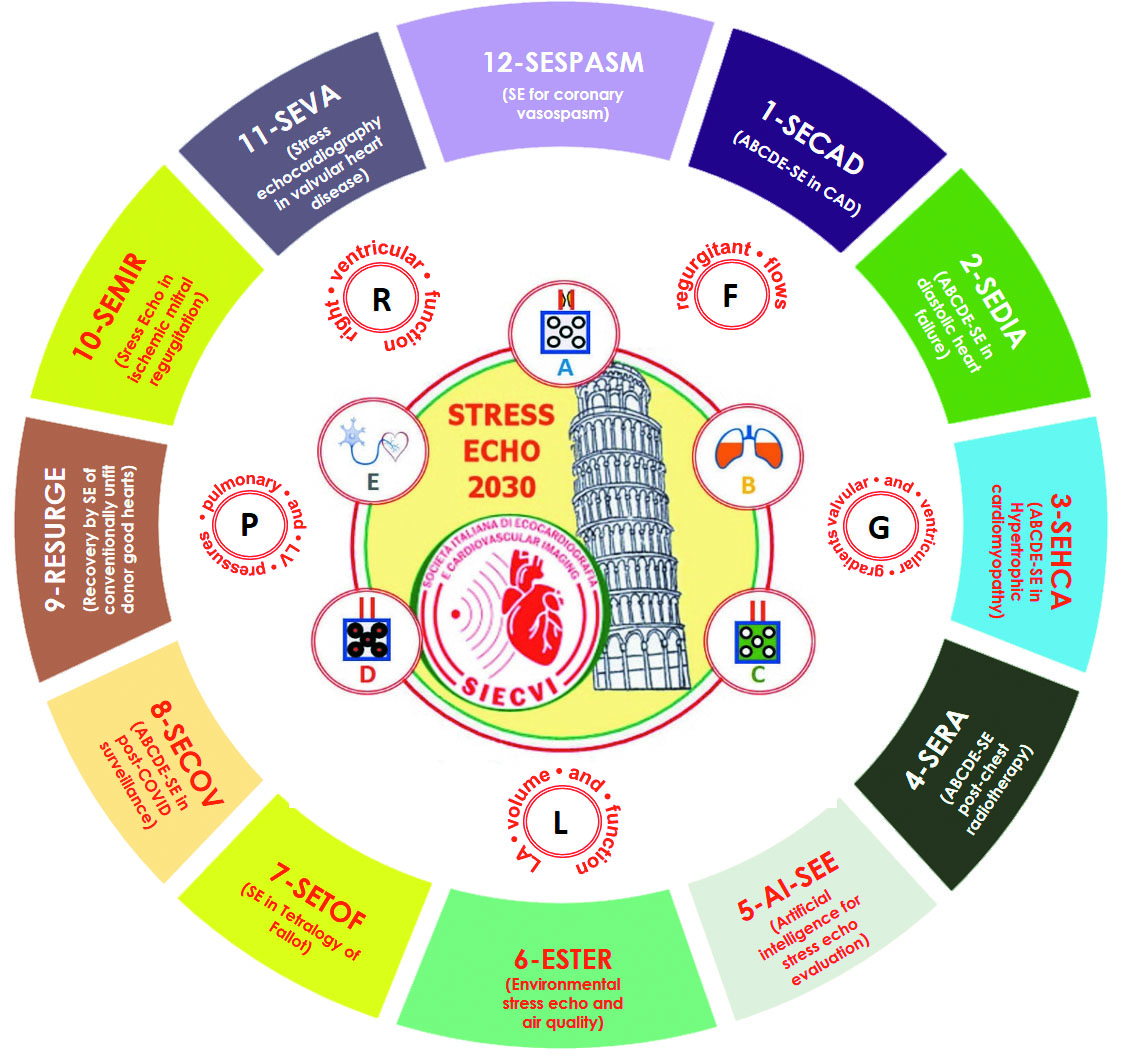Study Background
 Each and every step of ABCDE-SE provides independent and incremental prognostic information building on the prior steps and identifies distinct patient phenotypes and vulnerabilities possibly outlining different therapeutic targets: myocardial ischemia in step A, pulmonary congestion with B-lines in step B, preload reserve and left ventricular contractile reserve (LVCR) in step C, coronary microcirculation with coronary flow velocity reserve (CFVR) or real-time myocardial contrast echocardiography in step D, and cardiac autonomic balance with heart rate reserve (HRR) in step E.
Each and every step of ABCDE-SE provides independent and incremental prognostic information building on the prior steps and identifies distinct patient phenotypes and vulnerabilities possibly outlining different therapeutic targets: myocardial ischemia in step A, pulmonary congestion with B-lines in step B, preload reserve and left ventricular contractile reserve (LVCR) in step C, coronary microcirculation with coronary flow velocity reserve (CFVR) or real-time myocardial contrast echocardiography in step D, and cardiac autonomic balance with heart rate reserve (HRR) in step E.
This shared practice can now be used as a new standard of care and a suitable platform for the next wave of studies converging towards SE 2030 and sharing with the older SE2020 study some distinct features: effectiveness study, performed in the real world with real doctors facing real clinical problems in real consecutive patients; upstream quality control of reading and direct entering of data from peripheral centers in the data bank so that evidence is obtained inside and outside highly specialized academic centers; identification of simple yet innovative objectives relevant to change the clinical practice. These features are completely different from efficacy studies, as when highly specialized centers recruit highly selected patients, the resulting data may be difficult to translate in clinical practice.
For these reasons, the American Society of Echocardiography has identified already in 2013 as a top research need “the development of a registry of echocardiographic information (and eventually images) that can serve as a platform for quality improvement and clinical research. Such registry data would be accessible to the research community facilitating a broad range of clinical research on the effectiveness of echocardiography for the improvement of patient management and outcome”.
